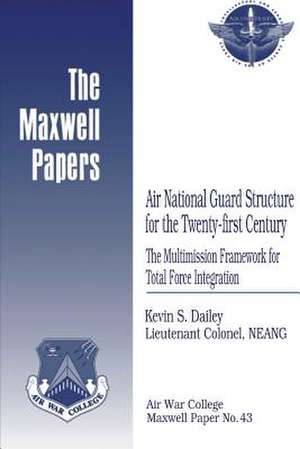Air National Guard Structure for the Twenty-First Century
Autor Lieutenant Colonel Neang Kevin Dailey Contribuţii de Air University Pressen Limba Engleză Paperback
Preț: 92.37 lei
Nou
Puncte Express: 139
Preț estimativ în valută:
17.67€ • 18.50$ • 14.62£
17.67€ • 18.50$ • 14.62£
Carte disponibilă
Livrare economică 17-31 martie
Preluare comenzi: 021 569.72.76
Specificații
ISBN-13: 9781479382163
ISBN-10: 1479382167
Pagini: 48
Dimensiuni: 152 x 229 x 3 mm
Greutate: 0.08 kg
Editura: CreateSpace Independent Publishing Platform
ISBN-10: 1479382167
Pagini: 48
Dimensiuni: 152 x 229 x 3 mm
Greutate: 0.08 kg
Editura: CreateSpace Independent Publishing Platform
